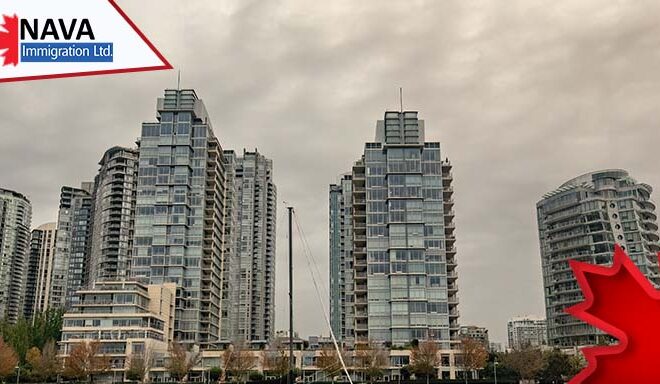Travel Options for Approved PRs Before Getting a PR Card
Do you need to travel to Canada but don’t have a PR card? Discover the travel options for approved PRs before the PR card arrives. After applying for Canadian permanent residency (PR) and obtaining a COPR, i.e., Confirmation of Permanent Residence, an individual must still complete the process of becoming a confirmed permanent resident of Canada by landing and getting a PR card.
There are two ways to land in Canada: complete immigration and soft landing.
Complete Immigration: In this process, new PRs and their dependents arrive in Canada fully prepared to relocate and live in the country.
Soft Landing: In this method, new PRs come to Canada mainly to fulfill the procedural requirement to obtain their permanent resident status and get their first PR card.
In both scenarios, particularly the second one, new PRs may be required to travel to Canada before they may obtain their PR card.
Canada’s new permanent residents can travel to the country before obtaining their PR card. However, the process is more involved than merely returning to Canada.
Discover what new PRs in Canada might be able to do in similar circumstances.
Notably, the details given in this guide will also be valid for individuals whose PR cards have expired.
Canadian government suggests new PRs that the renewal process for a PR card must be done well in advance. In particular, the suggested period is nine months before its expiration.
Canada’s PR Card: What Is It?
The PR Card of Canada is a document for identification for Canadian Permanent residents. Typically, Canada’s immigration department, Called Immigration, Refugees and Citizenship Canada (IRCC), issues the PR card.
In Canada, the PR card was implemented in 2002 as an alternative to printed identity documents and serves as a confirmation of status document in Canada.
A new permanent resident of Canada receives a PR Visa after getting approval for a PR of Canada. A PR visa authorizes new PRs to travel to the country, while PR Cards permit Canada’s permanent residents to come and remain in the country freely as a guarantee of their PR status.
Notably, when a new permanent resident comes to Canada for the first time, they do not need a PR card. Instead, they’ll require the following documents:
- A PR Visa, if they belong to a country that needs a visa to travel to Canada
- A Valid Passport
- A COPR/e-COPR, i.e., a Confirmation of Permanent Residence
- Approved Medical Test Results
New permanent residents won’t need to apply for their first PR Card. IRCC department will send the PR card via mail to the PR address they disclose to the border administrator at the port of entry. Alternatively, if the address within Canada is supplied within 180 days, IRCC will mail the PR card to this address.
Travel Options for Approved PRs Before Getting a PR Card
Note that the Government of Canada does not ship PR cards to addresses located in countries outside of Canada. Also, PR cannot be received by any third party on PR’s behalf. This means that only the new PR is permitted to accept their PR card. So, here are the travel options for approved PRs residing outside Cabada before getting a PR Card.
New PRs have to apply for a Permanent Residence Travel Document (PRTD). A PRTD is a travel document the Canadian government provides to PRs, enabling them to re-enter Canada. Typically, it is only valid for single use.
New immigrants can use a PRTD if they meet the following eligibility criteria. If they :
- are a Canadian PR;
- are residing outside of Canada;
- don’t possess a valid PR card to show their status in the country, and
- will return to Canada by train, bus, Plane, or ship.
Note that there are other valid documents or travel options for approved PRs if they are coming back to Canada by private vehicle, which can help them prove their identity and status.
Application Procedure for Getting a PRTD
This section will outline the process for obtaining a PRTD. Before starting, note that New PRs can apply for PRTDs from outside of Canada.
At first, new Permanent Residents must get the application package to apply for a PRTD. Then, they have to fill out the application and assemble all the supporting documents and applicable forms.
PRs may also need to submit the associated fees online when applying for a PRTD.
Please note that permanent residents may not be able to submit paper applications, depending on the location they are applying from. In such scenarios, they may apply online and submit all the supporting documents and the application via the permanent residence portal.
If PR can proceed offline, i.e., via paper application, they can submit it to the nearest visa application center (VAC). Note that the mode of applying, i.e., Offline or online for a PRTD, may influence how quickly a PR will receive their PRTD.
Moreover, after applying for a PRTD, a PR may need to appear for an interview with a VAC officer before getting a response on their application.
Alternatives for Getting a PR Card
New permanent Residents in Canada can apply for expedited processing of their PR card if they urgently need to travel soon but still have some time in Canada.
The eligible conditions to apply for urgent processing of PR card include the urgent travel need in the upcoming three months due to any of the following conditions;
- A serious personal illness;
- A family member’s serious illness
- The passing of a family member;
- An employment opportunity and/or
- Responsibilities related to your current job.
Please note that receiving a PR card in time is not guaranteed, even if a permanent resident has applied for urgent processing of their PR card.
Application processing might take time, and applications for PR cards can not be completed in less than three weeks. You can use IRCC’s tool to check the personalized waiting times.





